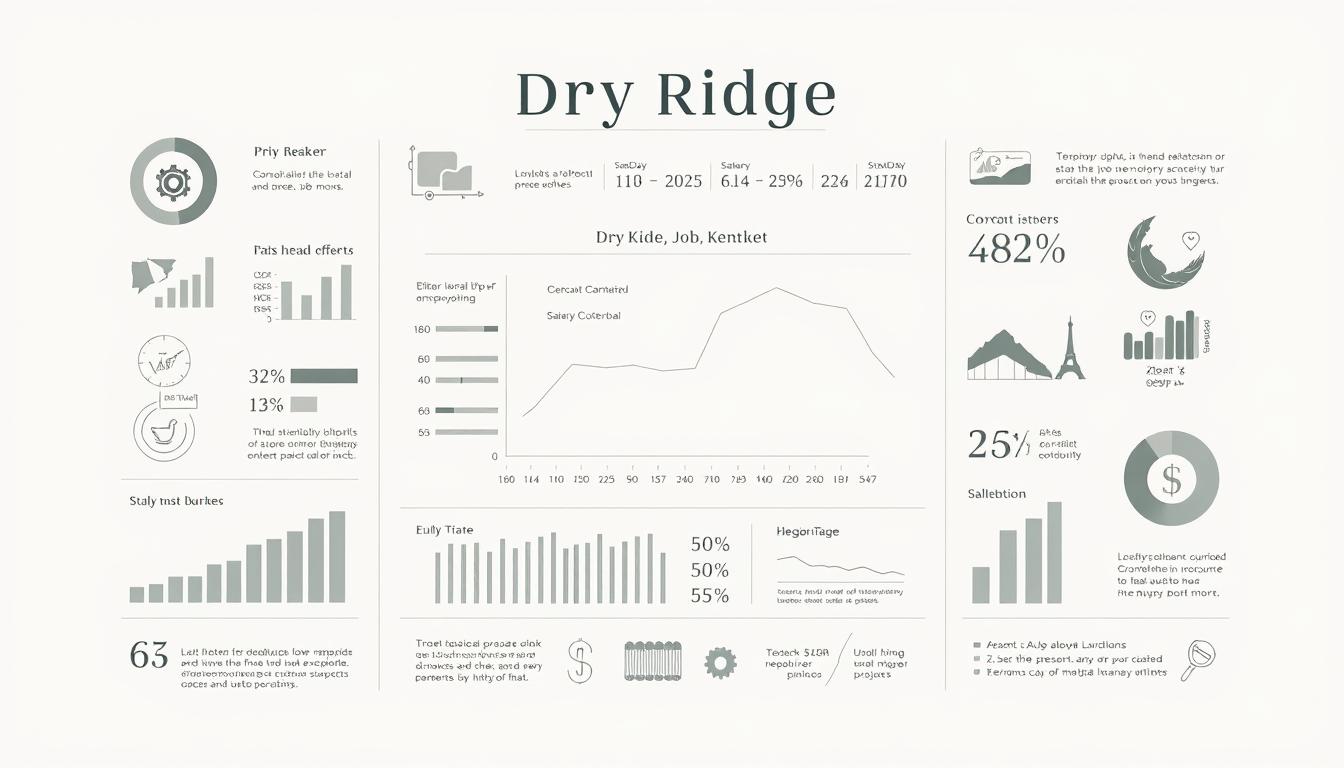Thinking about a career in the nonprofit sector? It’s a rewarding path, but knowing how to get a job at a nonprofit can feel a bit different from the for-profit world. This guide breaks down what you need to know, from finding the right organizations to acing your application and interview. Let’s get you started on making a difference.
Key Takeaways
- Understand the nonprofit sector by identifying organizations whose missions align with your values and researching their structure and funding sources.
- Tailor your application materials, like your resume and cover letter, to highlight the specific skills and experiences that demonstrate your commitment to the nonprofit’s cause.
- Actively network within the nonprofit community and prepare thoroughly for interviews to showcase your passion and suitability for the role.
Understanding the Nonprofit Landscape
The nonprofit sector is a vibrant and diverse part of the economy, driven by missions to serve the public good rather than generate profit. These organizations operate across a wide spectrum of causes, from environmental conservation and education to healthcare and social services. Understanding the unique characteristics of nonprofits is key to finding a fulfilling role within them. Unlike for-profit businesses, their success is often measured by impact and mission fulfillment, not just financial returns. This means that the culture, values, and operational priorities can differ significantly. For instance, many nonprofits rely heavily on grants, donations, and volunteer support, which shapes their financial structures and staffing needs. Knowing this landscape helps you identify organizations that align with your personal values and career aspirations. It’s a sector where passion for a cause often fuels the work, creating a unique and rewarding work environment. Many professionals find that working for a nonprofit offers a strong sense of purpose and the chance to make a tangible difference in the world. The sector is a significant contributor to the economy, employing millions and playing a vital role in community development. For example, in Canada, non-profit organizations employ one in ten workers, highlighting their economic importance [72f7].
Identifying Mission-Aligned Organizations
Finding a nonprofit that truly resonates with you starts with understanding its core mission. What problem is it trying to solve? Who does it serve? Look beyond the surface-level description and dig into their stated goals and the actual work they do. Websites, annual reports, and news articles are great places to start. Consider what kind of impact you want to make. Are you passionate about local community issues, or do you prefer to focus on global challenges? Think about the scale of the organization, too. Some people thrive in smaller, grassroots organizations where they can wear many hats, while others prefer the structure and resources of larger, established nonprofits. It’s also worth considering the organization’s values and how they are put into practice. Do they emphasize collaboration, innovation, or community engagement? Aligning with an organization whose values mirror your own will make your work more meaningful and sustainable.
Researching Nonprofit Structures and Funding
Nonprofits aren’t all structured the same way. You’ll encounter various types, such as public charities, private foundations, and social advocacy groups, each with different legal and operational frameworks. Understanding these differences can help you grasp how they are governed and how decisions are made. Funding is another critical aspect. Most nonprofits rely on a mix of sources, including individual donations, corporate sponsorships, government grants, and earned income from services or products. Researching an organization’s funding streams can give you insight into its financial stability and strategic priorities. For example, an organization heavily reliant on a few large grants might operate differently than one with a broad base of individual donors. Knowing this can help you understand potential challenges and opportunities within the organization. Tools like RoboApply can help streamline the application process once you’ve identified suitable organizations, but the initial research into their mission, structure, and funding is something you’ll want to do yourself.
The nonprofit sector offers a unique career path for those driven by purpose. By thoroughly researching organizations and understanding their operational models, you can position yourself for a role where your skills and passion can truly make a difference.
Crafting Your Nonprofit Application

Getting your application noticed in the nonprofit sector is all about showing you understand and are passionate about their mission. It’s not just about listing your skills; it’s about connecting them to the organization’s goals. Think of your resume and cover letter as your first handshake with the organization. They need to clearly communicate why you’re a good fit and what you can bring to their cause.
Tailoring Your Resume and Cover Letter
This is where you really show you’ve done your homework. A generic resume won’t cut it. You need to customize it for each nonprofit you apply to. Look at the job description and the organization’s website. What keywords do they use? What are their main programs or recent achievements? Weave these into your resume, especially in your summary or objective statement and your experience descriptions. Use action verbs and quantify your accomplishments whenever possible. For example, instead of saying ‘helped with fundraising,’ try ‘assisted in raising $10,000 for the annual gala.’
Your cover letter is your chance to tell a story and show your personality. Start with a strong opening that expresses your enthusiasm for the nonprofit’s mission. Then, connect your past experiences and skills directly to the requirements of the role and the organization’s needs. Don’t just repeat your resume; expand on it. Explain why you’re passionate about their work and how your unique background can contribute. Many resources can help you craft a compelling application, like ResumeHelp’s examples which offer guidance on creating effective cover letters for nonprofit roles. Remember, an effective cover letter clearly demonstrates how your professional experience aligns with the requirements of an open position and the organization’s culture. It’s a tool for showcasing your suitability to a potential employer.
Highlighting Relevant Skills and Experience
Nonprofits often look for a specific set of skills and experiences. Beyond the technical qualifications, they value things like strong communication abilities, teamwork, problem-solving, and a genuine commitment to service. When describing your experience, think about how it relates to the nonprofit world. Did you volunteer? Did you manage projects with limited resources? Did you work with diverse populations? Highlight these experiences. Quantifiable achievements are great, but so are qualitative ones that show your impact. For instance, ‘Developed a new volunteer training program that improved participant retention by 15%’ is strong. Even if your previous roles weren’t in the nonprofit sector, you can still draw parallels. Perhaps you managed budgets, coordinated events, or led teams – these are all transferable skills that nonprofits need. Making sure your resume is tailored effectively to highlight your unique qualifications for nonprofit roles is key. You can find instructions on crafting a compelling nonprofit resume for 2025 that emphasizes mission-driven experience and values to help you stand out and secure a position. This is how you show them you’re not just looking for a job, but a place to make a difference.
When you’re applying for nonprofit roles, it’s important to show that you understand the organization’s mission and values. Your application materials should reflect this understanding, demonstrating how your skills and experiences can directly contribute to their work and impact.
Here’s a quick way to think about what to emphasize:
- Mission Alignment: How does your personal passion connect with their cause?
- Transferable Skills: What abilities from past jobs or volunteer work are relevant?
- Impact: How have you made a difference in previous roles (quantify if possible)?
- Commitment: Why are you dedicated to this specific organization’s mission?
Navigating the Nonprofit Job Search

So, you’ve identified some organizations that really speak to you and you’ve polished up your application materials. That’s fantastic! But the job hunt itself can feel like a whole other ballgame, right? It’s not just about sending out resumes into the void. You’ve got to be strategic about how you connect with people and present yourself. Think of it as building relationships, not just applying for jobs.
Networking Within the Sector
Networking is huge in the nonprofit world. It’s often said that many jobs are found through connections, and that’s definitely true here. Don’t be shy about reaching out to people who work at organizations you admire. A simple, polite message on LinkedIn or a brief email asking for an informational interview can go a long way. These chats aren’t about asking for a job directly; they’re about learning more about the organization, the role, and the field. You might discover unadvertised openings or get advice on how to best position yourself. It’s also a great way to learn about the day-to-day realities of working in a specific nonprofit role. Remember, people are generally happy to share their experiences, especially if you show genuine interest.
- Start with your existing network: Let friends, family, and former colleagues know you’re looking. You never know who might have a connection.
- Attend industry events: Look for local nonprofit gatherings, workshops, or conferences. These are prime spots to meet people.
- Volunteer: This is a classic for a reason. Volunteering not only gives you hands-on experience but also puts you directly in touch with staff and other volunteers, opening doors to potential opportunities. It’s a great way to get your foot in the door and demonstrate your commitment.
- Informational Interviews: Reach out to people in roles or organizations that interest you. Ask about their career path and advice for someone starting out. This is a low-pressure way to gather information and make connections.
The nonprofit sector often values passion and commitment just as much as experience. Showing that you’re genuinely invested in a cause can make a big difference.
Preparing for Nonprofit Interviews
Once you land an interview, it’s time to prepare. Beyond the standard interview advice, nonprofit interviews often focus heavily on your alignment with the organization’s mission and values. Be ready to talk about why this specific cause matters to you and how your personal values connect with theirs. Researching the organization’s recent projects, annual reports, and any challenges they might be facing will show you’ve done your homework. Think about specific examples from your past experience that demonstrate your skills, but also how you’ve handled situations with integrity and a focus on impact.
- Know the Mission Inside and Out: Understand their core purpose and how your role contributes to it. Be ready to articulate this connection. You can find great resources for understanding nonprofit jobs by looking at entry-level nonprofit positions.
- Prepare Behavioral Questions: Use the STAR method (Situation, Task, Action, Result) to answer questions about your past experiences. Focus on examples that highlight collaboration, problem-solving, and dedication.
- Ask Thoughtful Questions: Have a few questions ready for the interviewer. These should show your engagement and interest in the organization’s work and future. For example, you might ask about the biggest challenges the team is currently facing or how success is measured in the role.
- Understand the Funding Model: Briefly research how the nonprofit is funded (grants, donations, government contracts, etc.). This shows a broader understanding of the sector’s operational realities. This can be helpful when looking for jobs in places like North Little Rock in 2025 or Princeton in 2025.
Remember, interviews are a two-way street. It’s your chance to see if the organization is a good fit for you, too. Good luck!
Looking for a job in the nonprofit sector? It can be tough, but we’re here to help you find the perfect fit. Our tools can make your job search much easier. Visit our website today to get started on your path to a rewarding career.
Wrapping Up Your Nonprofit Job Search
So, you’ve learned a lot about finding a job at a nonprofit. It takes effort, sure, but it’s totally doable. Remember to really look at what each organization does and how your skills fit in. Don’t be afraid to reach out and connect with people already working there. And when it comes to your application, make sure it shows why you care about their mission. It’s not just about having the right experience; it’s about showing you’re a good match for their cause. Keep at it, and you’ll find a role where you can make a real difference.
Frequently Asked Questions
How do I find a nonprofit that matches my interests?
Think about what kind of work really matters to you. What causes do you care about? Look for groups that are doing good work in those areas. It’s like picking a team you really want to play for because you believe in their mission.
What should I know about a nonprofit before applying?
Before you apply, learn about the nonprofit. See how it’s set up – is it a small local group or a big national one? Also, find out where their money comes from. This helps you understand how they operate and what kind of jobs they might have.
Is it important to network with people in the nonprofit world?
Yes, networking is super important! Talk to people who already work in nonprofits. Go to events or online groups where these folks hang out. You can learn a lot and sometimes find out about jobs before they are even advertised.


















